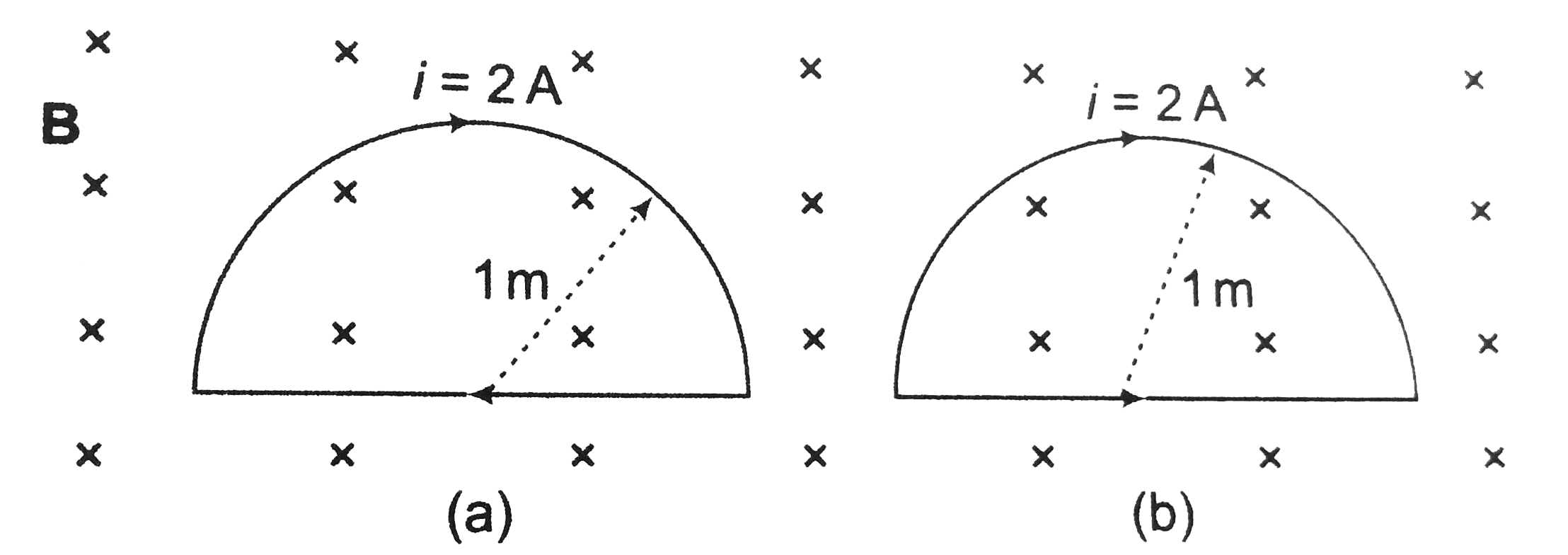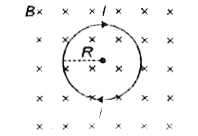A wire loop is rotated in a uniform magnetic field about an an axis perpendicular to the field. The direction of the current induced in the loop reverses once each
quarter revolution
half revolution
full revolution
two revolutions
The correct Answer is:B
To determine how often the direction of the induced current in a wire loop reverses when the loop is rotated in a uniform magnetic field, we can follow these steps:
1. Understanding the Setup:
- We have a wire loop that is rotating in a uniform magnetic field. The axis of rotation is perpendicular to the magnetic field lines.
2. Magnetic Flux Calculation:
- The magnetic flux (Φ) through the loop is given by the formula:
Φ=B⋅A⋅cos(θ)
where B is the magnetic field strength, A is the area of the loop, and θ is the angle between the magnetic field and the normal to the loop's surface.
3. Rotation of the Loop:
- As the loop rotates, the angle θ changes with time. If the loop rotates with an angular velocity ω, then:
θ=ωt
4. Flux Variation Over Time:
- At t=0, θ=0 and the flux is maximum (Φmax=B⋅A).
- As time progresses, the angle increases, and the flux decreases until θ=90∘ (or π2 radians), at which point the flux is zero.
5. Flux Reversal:
- After reaching zero at 90∘, as the loop continues to rotate to 180∘, the flux becomes negative (indicating a reversal in direction). The flux reaches its minimum value at 180∘.
6. Induced Current Direction:
- According to Lenz's Law, the induced current will flow in such a way as to oppose the change in magnetic flux.
- From 0∘ to 90∘, the flux decreases, and the induced current flows in one direction (let's say clockwise).
- From 90∘ to 180∘, the flux increases in the negative direction, causing the induced current to reverse (now flowing anti-clockwise).
7. Conclusion:
- The current reverses its direction every half revolution (i.e., every 180∘) of the loop's rotation.
Final Answer:
The direction of the current induced in the loop reverses once every half revolution.
- We have a wire loop that is rotating in a uniform magnetic field. The axis of rotation is perpendicular to the magnetic field lines.
- The magnetic flux (Φ) through the loop is given by the formula:
Φ=B⋅A⋅cos(θ)
where B is the magnetic field strength, A is the area of the loop, and θ is the angle between the magnetic field and the normal to the loop's surface.
- As the loop rotates, the angle θ changes with time. If the loop rotates with an angular velocity ω, then:
θ=ωt
- At t=0, θ=0 and the flux is maximum (Φmax=B⋅A).
- As time progresses, the angle increases, and the flux decreases until θ=90∘ (or π2 radians), at which point the flux is zero.
- After reaching zero at 90∘, as the loop continues to rotate to 180∘, the flux becomes negative (indicating a reversal in direction). The flux reaches its minimum value at 180∘.
- According to Lenz's Law, the induced current will flow in such a way as to oppose the change in magnetic flux.
- From 0∘ to 90∘, the flux decreases, and the induced current flows in one direction (let's say clockwise).
- From 90∘ to 180∘, the flux increases in the negative direction, causing the induced current to reverse (now flowing anti-clockwise).
- The current reverses its direction every half revolution (i.e., every 180∘) of the loop's rotation.
The direction of the current induced in the loop reverses once every half revolution.
Topper's Solved these Questions
Similar Questions
Current loop in a uniform magnetic field
View SolutionA rectangular coil of area A rotates in a uniform magnetic field B with angular velocity about an axis perpendicular to the field, initially the plane of coil is perpendicular to the field,then the average induced e.m.f. after rotating by 90° is
View Solution
Knowledge Check
A wire loop is rotated in a uniform magnetic field about an axis perpendicular to the field. The direction of the current induced in the loop reverses in each
Ahalf rotationBquarter rotationCthree quarter rotationDfull rotationA conducting loop is placed in a uniform magnetic field with its plane perpendicular to the field with its plane perpendicular to the field. An emf is induced in the loop if
(i) it is traslated
(ii) it is rotated about its axis
(iii) it is rotated about a diameter
it is deformedA(i),(ii)B(ii),(iii)C(iii),(iv)D(i),,(v)A conducting loop in the form of a circule is placed in a uniform magnetic field with its place perpendicular to the direction of the field. An e.m.f. will be induced in the loop if
Ait is translated parallel to itself.Bit is rotated about one of its diameters.Cit is rotated about its own axis which is parallel to the field.Dthe loop is deformed from the original shape.
A metallic loop is placed in a nonuiform magnetic field. Will an emf be induced in the loop?
View SolutionIn the figure shown a semicircular wire loop is placed in a uniform magnetic field B=1.0T. The plane of the loop is perpendicular to the magnetic field. Current i=2A flows in the loop in the directions shown. Find the magnitude of the magnetic force in newton in both the cases a and b. The radius of the loop is 1.0 m

View SolutionA circular wire loop of radius r lies in a uniform magnetic field B, with its plane perpendicular to magnetic field. If the loop is deformed to a square shape in the same plane in time t, the emf induced in the loop is
View SolutionTwo loops in a uniform magnetic field are perpendicular to it. One is at rest and other is in motion. In which of the loop emf is induced:
View SolutionA circular loop of radius R is kept in a uniform magnetic field pointing perpendicular into the plane of paper. When a current l flows in the loop, the tension produced in the loop is

View Solution
